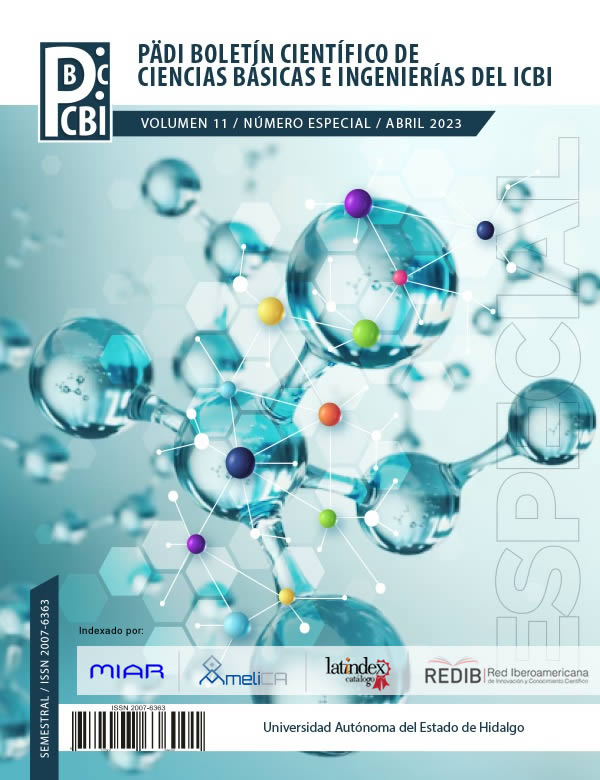Au(III) recovery with encapsulated ionic liquids. Effect of emulsifier
Abstract
The global production of electronic scrap is an environmental problem. An important part of this waste is precious metals. To recover them, several separation methods are used, such as extraction with encapsulated extractants, being necessary to manufacture stable emulsions. This paper presents results of the fabrication of materials with the ionic liquid (IL) Cyphos IL 101 (trihexyl(tetradecyl)phosphonium chloride) encapsulated with calcium alginate by reverse gelling. Emulsions of LI, carboxymethylcellulose (CMC) and gum arabic as emulsifier were used. The materials stability and their performance in the Au(III) extraction were studied as a function of the fabrication time. The obtained results are compared with them previously obtained with similar materials without GA. Emulsions and microcapsules with GA show a higer stability. Increasing the fabrication time, both materials show a decrease of the extraction capacity and speed, but these variations were lower for the microcapsules with GA.
Downloads
References
Abdelbasir, S.M., Hassan, S.S.M., Kamel, A.H., El–Nasr, R.S. (2018). Status of electronic waste recycling techniques: a review. Environmental Science and Pollution Research, 11(8), 15–30. DOI: 10.1007/s11356-018-2136-6
Ahirwar, R., Tripathi, A. K. (2021). E–waste management: A review of recycling process, environmental and occupational health hazards, and potential solutions. Environmental Nanotechnology, Monitoring & Management, 15(10), 30–45. DOI:10.1016/j.enmm.2020.100409
Appelqvist, I.A.M., Golding, M., Veeker, R., Zuidam, N.J. (2016). Emulsions as delivery systems in foods. Cap. 6. págs. 129–172. En: Jamileh M. Lakkis (Ed.), Encapsulation and controlled release technologies in food systems. DOI:10.1002/9781118946893.ch6
Bai, L., Huan, S., Li, Z., McClements, D. J. (2017). Comparison of emulsifying properties of food–grade polysaccharides in oil–in–water emulsions: Gum arabic, beet pectin, and corn fiber gum. Food Hydrocolloids, 66, 144–153. DOI:10.1016/j.foodhyd.2016.12.019
Campelo, P. H., Affonso Junqueira, L., Vilela de Resende, J., Domingues Zacarias, R., Barros Fernandes, R. V., Alvarenga Botrel, D., Vilela Borges, S. (2017). Stability of Lime Essential Oil Emulsion Prepared Using Biopolymers and Ultrasound Treatment. International Journal of Food Properties, 20(S1), S564–S579. DOI:10.1080/10942912.2017.1303707
Cyganowski, P., Garbera, K., Les´niewicz, A., Wolska, J., Pohl, P. (2017). The recovery of gold from the aqua regia leachate of electronic parts using a core–shell type anion exchange resin. Journal of Saudi Chemical Society, 21(6), 741-750. DOI:10.1016/j.jscs.2017.03.007
Dickinson, E. (1994). Protein–stabilized emulsions. Journal of Food Engineering, 22(1–4), 59–74. DOI:10.1016/0260-8774(94)90025-6
Dickinson, E., Galazka, V. B. (1991). Emulsifying behaviour of gum arabic. Part 1: Effect of the nature of the oil phase on the emulsion droplet–size distribution. Carbohydrate Polymers, 14(4), 373–383. DOI: 10.1016/0144-8617(91)90003-U
Islam, A., Ahmed, T., Rahman, A., Hasan, M., Monir, M. U., Aziz, A. A. (2019). Advances in sustainable approaches to recover metals from e–waste–A review. Journal of Cleaner Production, 244(20), 1–59. DOI:10.1016/j.jclepro.2019.118815
Kaur, G., Kumar, H., Singla, M. (2022). Diverse applications of ionic liquids: A comprehensive review. Journal of Molecular Liquids, 351, 118556, 1–19. DOI:10.1016/j.molliq.2022.118556
Khaliq, A., Rhamdhani, M., Brooks, G., Masood, S. (2014). Metal extraction processes for electronic waste and existing industrial routes: A review and australian perspective. Resources, 3(1), 152–179. DOI:10.3390/resources3010152
Lupo Pasin, B., González Azón, C., Maestro Garriga, A. (2012). Microencapsulación con alginato en alimentos. Técnicas y aplicaciones. Revista Venezolana de Ciencia y Tecnología de Alimentos, 3(1), 131–151. https://sites.google.com/site/1rvcta/v3-n1-2012/r8
Fraser, K.J., MacFarlane, D.R. (2009). Phosphonium–based ionic iiquids: An overview. Australian Journal of Chemistry, 62(4), 309–321. DOI:10.1071/CH08558
Morales, J. (2020). Microencapsulación de líquidos iónicos con alginato de calcio mediante gelificación inversa para la recuperación de Au(III). Tesis de maestría, Universidad de Guanajuato. http://repositorio.ugto.mx/handle/20.500.12059/4502
Navarro, R., Saucedo , I., Lira, M. A., Alatorre , A. (2017). Amberlite XAD resins impregnated with ionic liquids from Au(III) recovery. Macromolecular Symposia, 374(1), 1–8. DOI:10.1002/masy.201600134
Navarro, R., Saucedo, I., Lira, M. A., Guibal, E. (2010). Gold (III) recovery from HCl solutions using Amberlite XAD–7 impregnated with an ionic liquid (Cyphos IL–101). Separation Science and Technology, 45(12,13), 1950–1962. DOI:10.1080/01496395.2010.493116
Pal, A., Mondal, M. H., Adhikari, A., Saha , B., Bhattarai, A. (2021). Scientific information about sugar–based emulsifiers: a comprehensive review. RSC Advances, 11(52), 33004–33016. DOI:10.1039/D1RA04968B.
Patel, S., Goyal, A. (2015). Applications of natural polymer gum arabic: A review. International Journal of Food Properties, 18(5), 986–998. DOI: 10.1080/10942912.2013.809541
Ritcey, G. M. (2006). Solvent extraction in hydrometallurgy: Present and future. Tsinghua Science and Technology, 11(2), 137–152. DOI:10.1016/S1007-0214(06)70168-7
Santagapita, P. R., Mazzobre, F. M., Buera, P. M. (2011). Formulation and drying of alginate beads for controlled release and stabilization of invertase. Biomacromolecules, 12(9), 3147–3155. DOI:10.1021/bm2009075
Vincent, T., Parodi , A., Guibal, E. (2008). Immobilization of Cyphos IL–101 in biopolymer capsules for the synthesis of Pd sorbents. Reactive & Functional Polymers, 68(7), 1159–1169. DOI:10.1016/j.reactfunctpolym.2008.04.001
Wei, W., Kumar, H., Bediako, J., Sang, Y. (2016). Aliquat–336–impregnated alginate capsule as a green sorbentfor selective recovery of gold from metal mixtures. Chemical Engineering Journal, 289(14), 413–422. DOI:10.1016/J.CEJ.2015.12.104
Zhu, Y., Sengupta, A. K. (1992). Sorption enhancement of some hydrophilic organic solutes though polymeric ligand exchange. Enviromental Science and Technology, 26(10), 1990–1998. DOI:10.1021/es00034a017
Zuidam, N.J., Shimoni, E. (2010). Overview of microencapsulates for use in food products or processes and methods to make them. En: Zuidam, N.J., Nedovic, V. (Eds.). Encapsulation technologies for active food ingredients and food processing. Springer, New York. N.Y. Pags.: 3-29. DOI:10.1007/978-1-4419-1008-0_2
Copyright (c) 2023 Ricardo Navarro-Mendoza, Luz Kareli Miranda-Navarrete, Enrique Eduardo Salazar-Calderón, Sergio Ramírez-López, Jessica Morales-Aguilar, Liliana Hernández-Perales

This work is licensed under a Creative Commons Attribution-NonCommercial-NoDerivatives 4.0 International License.













